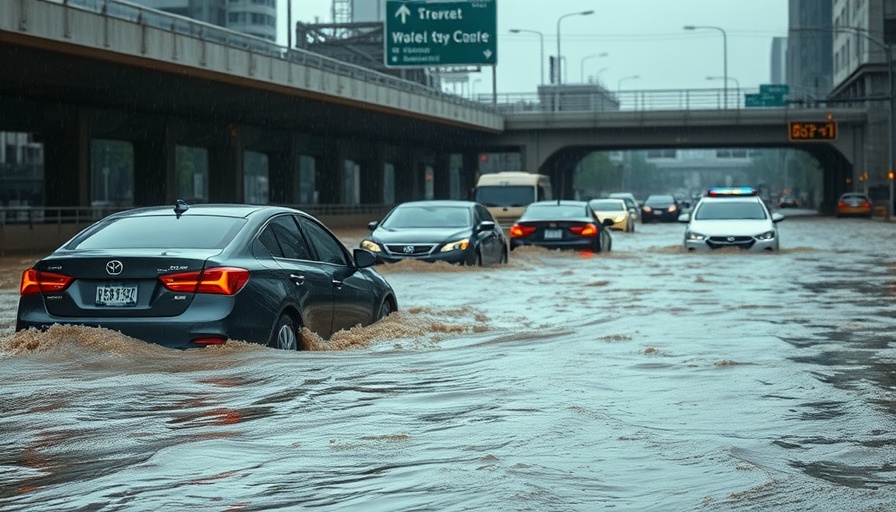
Heavy Rainfall and Flash Flooding: An Overview
In a dramatic turn of events this Tuesday, Chattanooga, a city nestled in the scenic Appalachian region of Tennessee, found itself grappling with severe flash flooding triggered by an unexpected deluge. The mayor of Hamilton County, Weston Wamp, swiftly declared a state of emergency as rescue teams mobilized to assist residents affected by the rising waters. As rainwater flooded roads and homes, emergency responders worked tirelessly to evacuate those trapped, highlighting the serious impact of extreme weather conditions.
Understanding the Extent of the Flooding
According to the National Weather Service, Chattanooga saw a staggering six inches of rain accumulate within hours, leading to widespread disruptions. The city, located along the Tennessee River, has a population of approximately 180,000, and its low-lying geography made it particularly vulnerable to flooding. Images shared by local authorities depicted rescue operations in progress, with firefighters assisting stranded citizens from submerged vehicles.
Emergency Response: A Community at Work
The earnest efforts of Chattanooga's emergency crews captured the community's resilience amid chaos. Firefighters waded into murky waters, illustrating not just the physical danger but also the spirit of teamwork that characterized the response to this natural disaster. “Exercise extreme caution,” urged Mayor Wamp, as the Hamilton County Sheriff’s Office emphasized the importance of avoiding unnecessary travel in these perilous conditions.
Lessons Learned from Past Flooding Events
This latest event echoes memories of past floods that have altered the landscape of Chattanooga. Understanding how previous flash floods have impacted urban development and emergency preparedness has become crucial for local authorities. As climate change continues to present unpredictable weather patterns, cities like Chattanooga must reevaluate their infrastructures to safeguard against future occurrences.
Future Trends: Urban Adaptation and Resilience
Looking forward, experts emphasize the need for enhanced drainage systems and flood prevention mechanisms. Investment in infrastructure will play a pivotal role in how cities cope with extreme weather events. Community discussions on urban development, green spaces, and flood control measures can foster a proactive approach to climate resilience. The current flood situation in Chattanooga may serve as a jarring wake-up call for other cities facing similar geographical vulnerabilities.
Community Support: The Power of Togetherness
In the face of adversity, the community impact becomes evident as residents come together to support one another. Local shelters opened their doors, providing safety and refuge for those displaced by the floodwaters. This spirit of solidarity, witnessed in times of crisis, not only strengthens community bonds but also exemplifies the importance of preparedness and mutual aid in reducing the effects of natural disasters.
Final Thoughts and Call to Action
As the waters recede and the clean-up begins, it becomes essential for citizens to engage in conversations about future readiness and environmental adaptation. Communities must advocate for sustainable practices and promote awareness of emergency preparedness. By fostering an informed public dialogue, we can collectively pave the way toward a resilient future.
Stay informed about local weather alerts and participate in community preparedness programs to build your knowledge and skills. Your involvement can make a significant difference in ensuring a safer environment for all.
 Add Row
Add Row  Add
Add 




Write A Comment